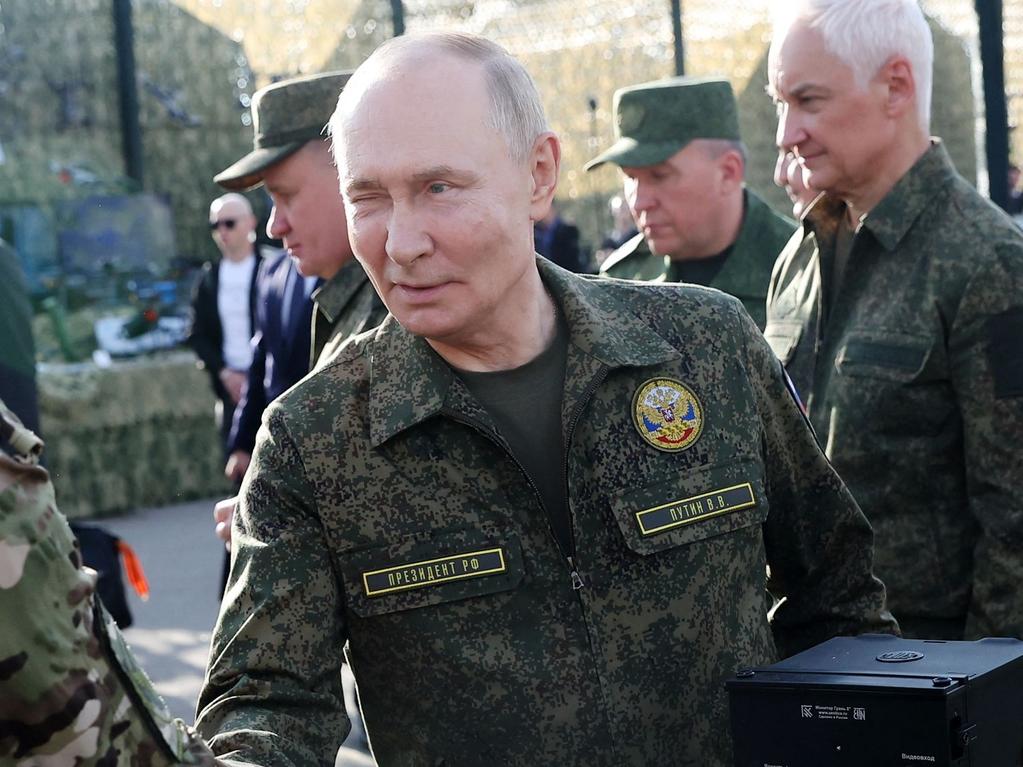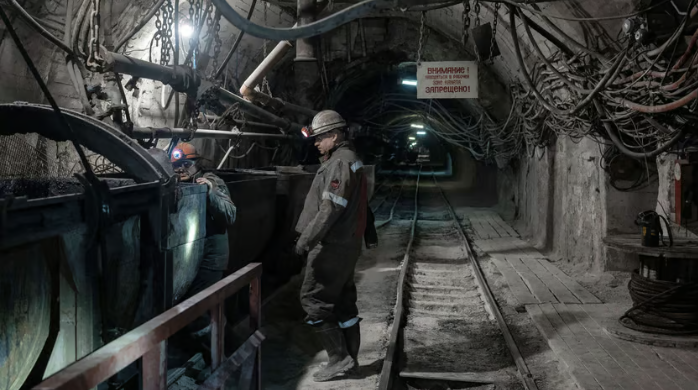
This article is more than
1 year old
Without it, the country’s remaining steel industry will be crippled
IN THE OUTSKIRTS of the eastern city of Pokrovsk two women stand waiting for their lift. Like most civilians in the city they have already fled elsewhere, but they have come back to collect some belongings. They are standing by a boarded-up petrol station which was bustling just a few months ago. Russian troops are creeping ever closer, and a full-scale battle for it is about to be joined. New defensive lines have been dug to the west of Pokrovsk to which, if and when it falls, Ukrainian troops will hope to fall back.
A plume of smoke can be seen rising in the distance. The Russians are now barely eight kilometres from Pokrovsk’s eastern outskirts. But they have more than this strategic road and rail junction in their sights. The jewel in Pokrovsk’s crown is a huge modern mine 15 minutes’ drive to its south-west. Just outside the village of Udachne, it towers over the surrounding fields. Last month it took its first war-related casualties when two women were killed in an attack.
ON THE OUTSKIRTS of the eastern city of Pokrovsk two women stand waiting for their lift. Like most civilians in the city they have already fled elsewhere, but they have come back to collect some belongings. They are standing by a boarded-up petrol station which was bustling just a few months ago. Russian troops are creeping ever closer, and a full-scale battle for it is about to be joined. New defensive lines have been dug to the west of Pokrovsk to which, if and when it falls, Ukrainian troops will hope to fall back.
A plume of smoke can be seen rising in the distance. The Russians are now barely eight kilometres from Pokrovsk’s eastern outskirts. But they have more than this strategic road and rail junction in their sights. The jewel in Pokrovsk’s crown is a huge modern mine 15 minutes’ drive to its south-west. Just outside the village of Udachne, it towers over the surrounding fields. Last month it took its first war-related casualties when two women were killed in an attack.
The Donbas region, once an area of endless steppe, was industrialised in the late 19th century when it was part of the Russian empire and when it was found to lie on rich seams of coal. These then powered its iron and steel industries. When Ukraine lost half of Donbas in 2014 to Russian-backed separatists, the loss of mines there meant a loss of 80% of its coal deposits. And in 2022, during the siege of Mariupol, the city’s two steel plants were destroyed, devastating Ukraine’s steel industry. One of them, Azovstal, became internationally famous as Ukrainian troops staged a last-ditch defence there.
Pokrovsk’s mine is far from being a rickety old Soviet relic. It opened in 1990 and now belongs to Metinvest, a company owned by Rinat Akhmetov, one of Ukraine’s richest men. Metinvest also owned the two Mariupol steel plants, and one of the largest coking-coal production plants in Europe which was in Avdiivka, and which was destroyed last year. Now he faces the loss of this mine too.
It is widely believed that for the Russian leadership, targeting Mr Akhmetov’s assets has, apart from undermining the Ukrainian economy, the added benefit of revenge. Until 2014 the oligarch was a key political and economic player in Donbas and Ukraine, and the Kremlin doubtless believed he would side with its separatists and with Russia. When he came down on the side of Ukraine, they saw this as a betrayal and seized his properties. Today even the gleaming stadium he had built in 2009 for the Shakhtar Donetsk football team that he owns lies abandoned.
Along with its associated plants and administration buildings, the Pokrovsk mine group employs 6,000 people, of whom some 1,000 are currently serving in the armed forces. It is the largest coking-coal mine in Ukraine. Its coal, used for smelting iron ore, is vital for the country’s remaining steel industry. This year Metinvest hoped to mine 5.3m tonnes of coal there. In 2023 Ukraine’s steel plants produced 6.2m tonnes of crude steel. In 2021 though, before the loss of the two Mariupol plants, Ukraine had produced 21.4m tonnes. In 2021 Ukraine was the world’s 14th largest steel producer but last year it had tumbled to 24th.
According to Andriy Buzarov, an analyst, the Russians do not even need to take the mine to throttle Ukraine’s remaining steel industry. As they advance, they will try to cut its power supply and shell the main road that takes its coal west to the remaining steel plants. They will then do the same at another smaller coking-coal mine 18km north of Udachne at Dobropillia, he thinks.
Before the full-scale invasion began in February 2022, steel accounted for a third of Ukraine’s exports. Since then, the economy has shrunk by a third. Oleksandr Kalenkov, the head of Ukrmetalurgprom, a metals and mining industry lobby group, said at a conference last month that the loss of Pokrovsk’s coking coal would lead to a further disastrous loss in steel output. “This year, we can reach 7.5m tonnes,” he said, but “in the event of the loss of Pokrovsk, it will be 2-3m tonnes.”
Yuriy Ryzhenkov, Metinvest’s CEO, has said in an interview with Forbes Ukraine in September that if Pokrovsk were lost, the company could still source some coking-coal domestically; but it would be forced to import the rest, which would make Ukrainian steel too expensive for some markets. As a consequence, the industry and the government would lose revenue. Mr Ryzhenkov noted that “some say ‘Look, we lost Mariupol and nothing happened.’ But this is not true. We have lost a serious part of our GDP. It’s just that we are now being financed by our partners, so we haven’t yet realised that we have much less money in the budget. And it would be the same story here.” And the Russians know it.